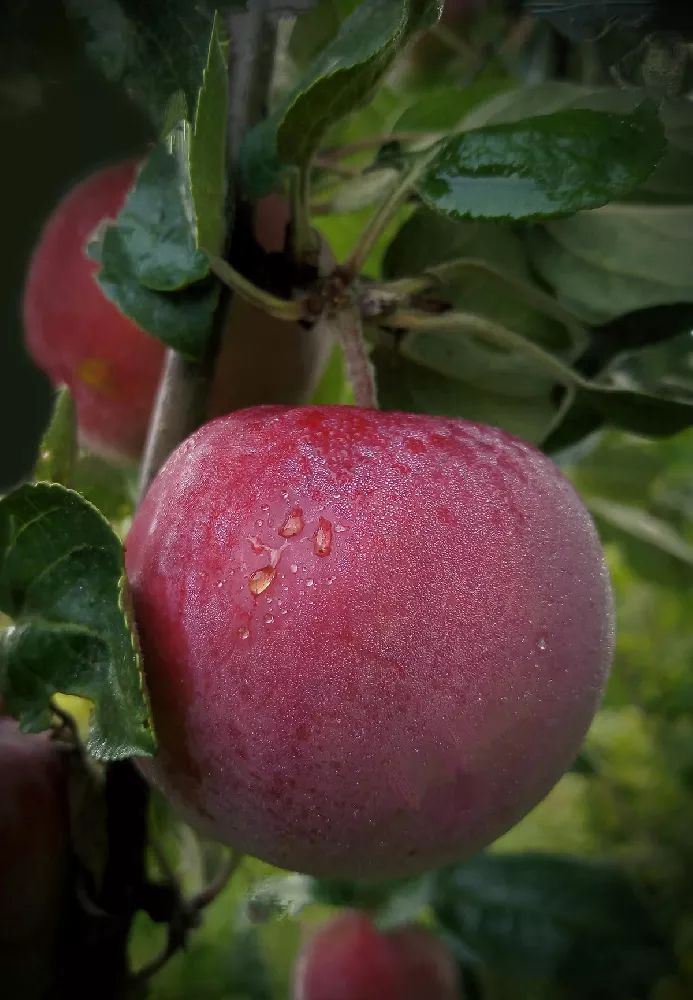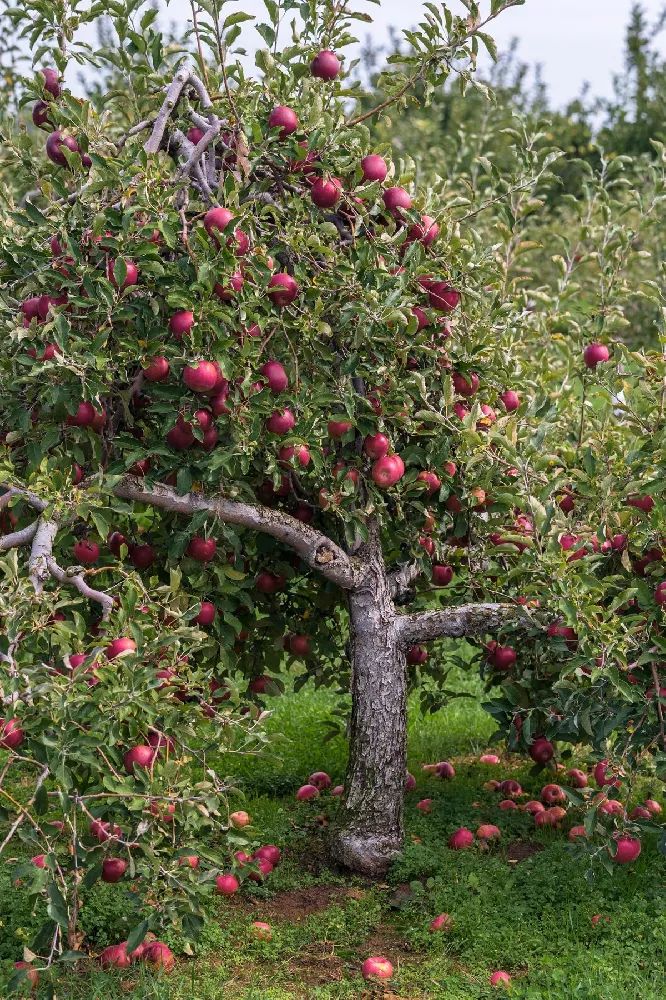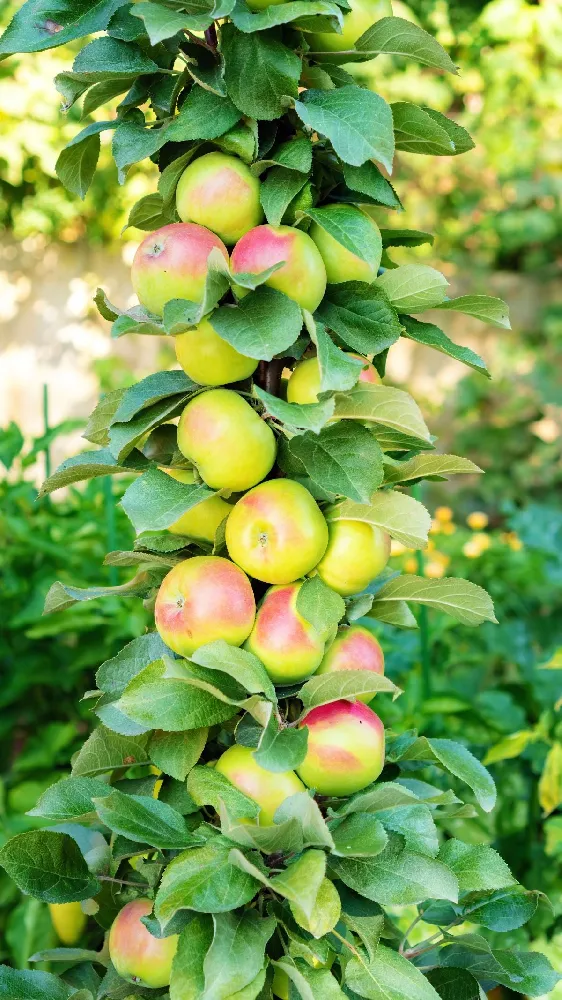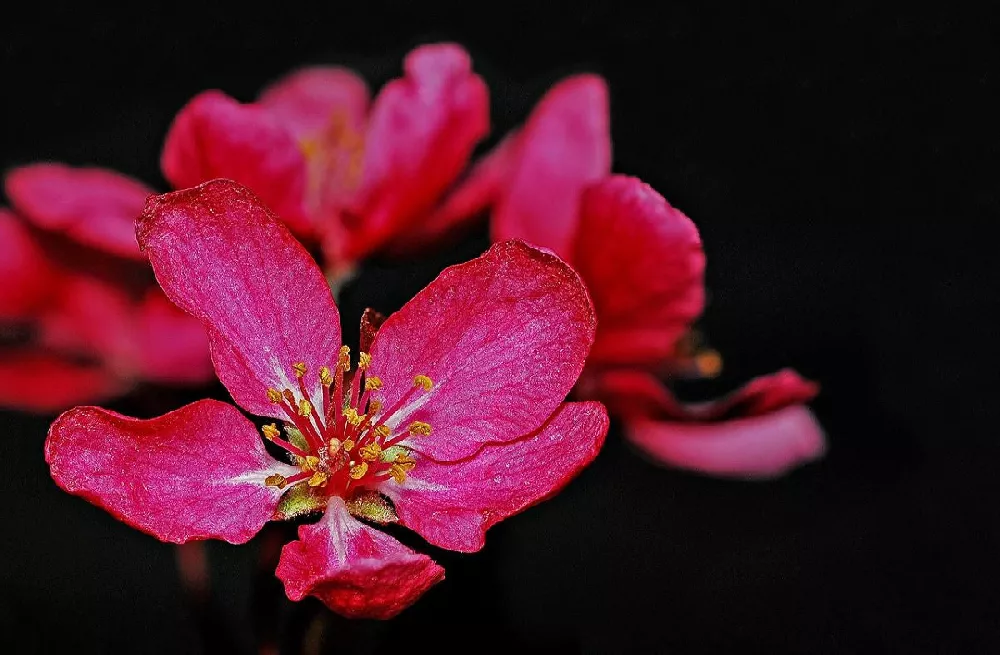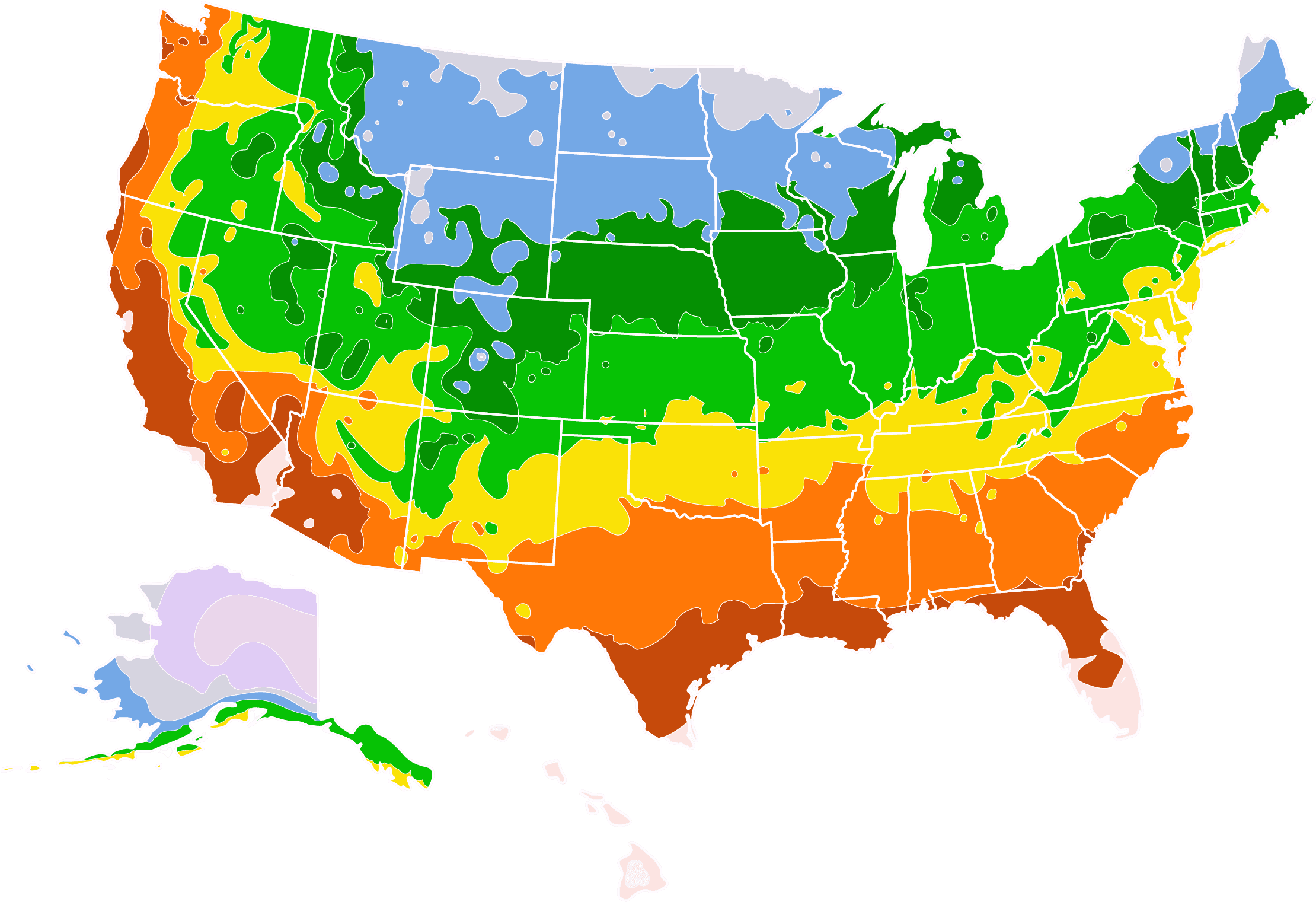- Home >
- Edible Plants >
- Arkansas Black Apple Tree
Arkansas Black Apple Tree for Sale - Buying & Growing Guide
In many ways, an Arkansas Black apple tree is a lot like any other apple tree you can grow. But once you lay eyes on this plant's fruits, you'll quickly see why it is so sought after. Arkansas Black apple trees are a cultivated variety named Malus pumila 'Arkansas Black' and have strikingly dark fruits. These nearly-black fruits are the inspiration for this plant's name and can stand as a stark point of contrast in your garden.
- Grows dark purple apples that are nearly black.
- Survives in a wide range of hardiness zones.
- Beautiful white flowers have five petals and an occasional pink tint.
Enter your zip code to find nearby stores that may carry this plant.
Plant Care
Sunlight

This apple tree needs at least six hours of direct sunlight daily for the best growth and fruit production.
Watering
Water this tree weekly during the growing season.
Fertilizing

Use a fertilizer that is either balanced or has a higher phosphorus ratio.
Planting and Care
Planting instructions
An Arkansas Black apple tree will grow best where there is plenty of sunlight and soil with excellent drainage and nutrient content. When choosing a location, be sure to give this species plenty of space to expand so that its roots do not run into any foundations or compete with surrounding plants for soil space. Dig a planting hole that is significantly wider than the root ball but about as deep before you start planting. It also helps to rough the edges of the root ball and the planting hole to loosen the roots and encourage them to spread horizontally.
Watering and nutrients
Often, you’ll need to give an Arkansas Black apple tree water at least once per week, both when it is young and when it is established. When watering, it is best to soak the area around your tree completely to promote healthy root development. For fertilization, you can use just about any fertilizer mix that is specific to apple trees. The best time to fertilize an Arkansas Black apple tree is in the early spring.
Pollination
Pollination can be quite difficult with an Arkansas Black apple tree. This cultivar is not self-fertile and is incapable of pollinating without the presence of another type of apple tree. As such, if you wish to harvest your Arkansas Black apple year after year, you’ll need to plant one or more apple tree varieties nearby. Also, some apple varieties are more capable than others of pollinating an Arkansas Black apple tree. Fuji apples, Gala apples, Granny Smith apples, and Red Delicious apples are among the best kinds to use.
Pruning
Prune your Arkansas Black apple tree in the late winter, just before the new growth begins to form. As always, you should use sterile pruning shears to remove any part of the tree that has damage or is dying. With apple trees, it is also wise to prune them to make for a better harvest. Typically, you should remove suckers and any other weak growth and promote a few sturdy main branches to support future fruits.
Pests, diseases, and animals
As is true for many apple varieties, Arkansas Black apple trees can have issues with apple scab. Apple scab is the result of a fungal infection that manifests with leaf spots and foliage discoloration. If you fail to treat this issue, your tree will weaken significantly after several seasons. Along with this problem, Arkansas Black apple trees can also come down with fire blight. Typically, the best way to overcome fire blight is through selective pruning.
Harvesting
Arkansas Black apple trees tend to become ready for harvest later in the season. You can expect yours to offer fruits that are ready for picking around the month of November. Arkansas Black apples usually have a dark purple color and can feature slight green blushes where they have received less light. These apples should be relatively easy to remove from the branches, and they have many culinary uses once you bring them into your kitchen.
Achieving maximum results
Interestingly, people don’t usually eat Arkansas Black apples raw. Instead, they will oftendry these fruits for later consumption, as was popular before refrigerators were widely available. Arkansas Black apples are also ideal for baking and making cider. However, you can enjoy them raw as well. The best way to do that is to refrigerate them for a few weeks after harvest. During those weeks, the apples will develop a sweeter and much more favorable flavor.
FAQs
What are the best ways to eat Arkansas Black apples?
Arkansas Black apples are the ideal dessert apple and are fantastic in pies and other baked goods. When cooked, Arkansas Black apples take on a unique flavor with hints of cinnamon and vanilla. Cider making is another popular use for Arkansas Black apples. For better storage, consider canning and drying them. Fortunately, these apples also prove to last quite long regardless of the method you choose to use.
Where do Arkansas Black apple trees live?
As the common name implies, Arkansas Black apples grow throughout the state of Arkansas and the surrounding regions. However, their natural range expands well beyond that, giving many gardeners the chance to grow these apples in their own yards. Arkansas Black apple trees can grow in nearly all states and survive in hardiness zones 4 through 9.
How large does an Arkansas Black apple tree get?
The height and spread of an Arkansas Black apple tree are similar to that of many other apple tree varieties. After several years of healthy growth, this cultivated variety will be near 12 to 15 feet tall and have a canopy that is slightly smaller. You can control both the size and shape of your Arkansas Black apple tree through pruning too. If fruit production is your goal, it's best to control your tree's height and spread to allow for easy access to the apples in the fall.
Compare Similar Products
You can't add more Product Name - Product size to the cart.
OK